Transporting your pet to the vet safely is important for any patient, including snakes. Here are a few things that you can do to make your limbless lovely’s trip more secure.
Generally, two layers of security are recommended to bring any reptile pet to the vet. Appropriately-sized pillow cases or handmade snake bags work very well! The second “barrier” is ideally a plastic container, preferably one with locking latches for extra security.
Small Snakes
Very small snakes can be transported using a small lock-top plastic container, such as the one pictured here. A small cloth snake bag or small towel can be used to make the snake feel more secure. This juvenile Cornsnake is quite comfortable in a small storage container, either using a snake bag or a small hand towel.
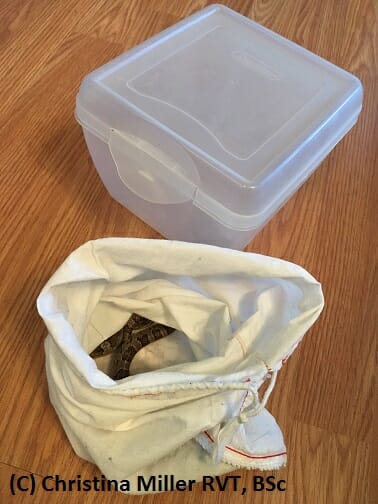
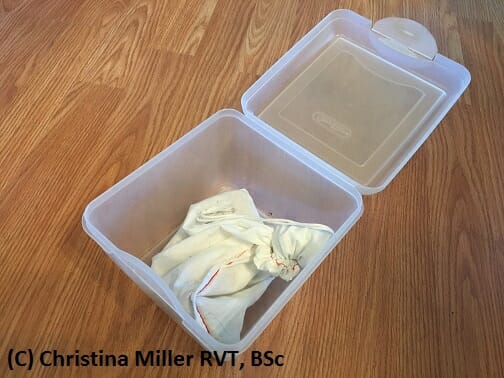
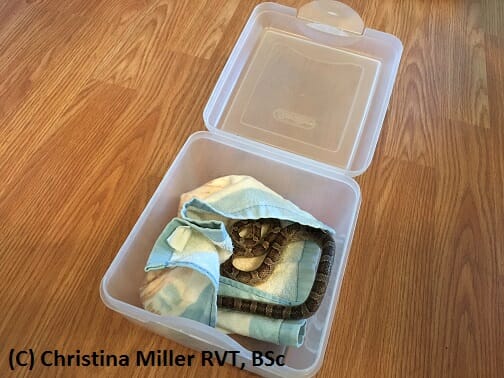
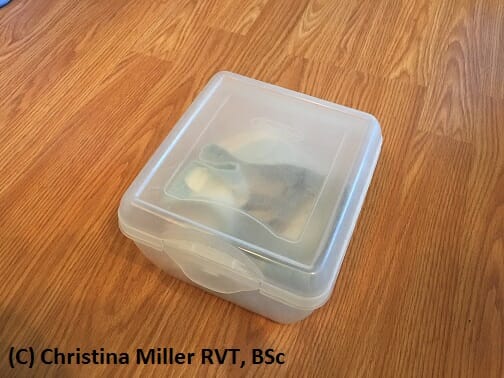
Medium to Large-Sized Snakes
Larger snakes can be secured in one to two pillowcases, and then transported in a lock-top plastic tote. This Boa Constrictor is approximately 1.5 m (5 ft) long and fits comfortably inside a medium-sized tote.
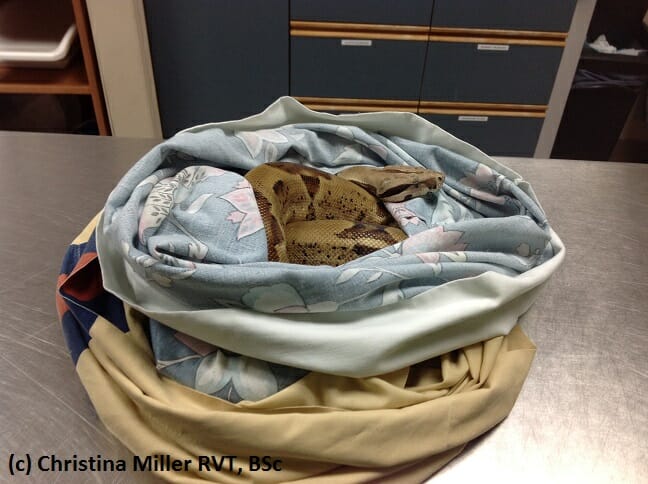
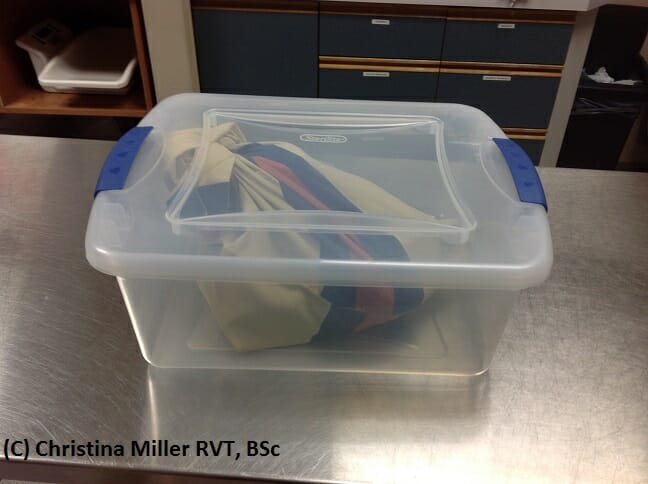
Very Large Snakes
Very large snakes can be comfortably transported in large storage totes, preferably those with lockable tops. Extra “locks” can be added along the sides of the lid using large binder clips. A large towel or blanket lining the tote, with a second towel or blanket on top of the snake, help provide extra security during travel.
Does my snake need a heat source while I travel?
It depends! Since we have such varied temperatures throughout the seasons here in Nova Scotia, we recommend adding a heat source when the temperature outside is below 18-20 °C (64-68 °F). Our preferred heat sources include either a rubber hot water bottle, or a thermotherapeutic compress (such as the Magic Bag®), that can be placed either inside the plastic tote underneath your snake, or outside the container if it’s too small.
Overheating can cause hyperthermia and death within minutes. It is critical that you test the temperature of any heating device before using it for travel with your pet. We recommend using an infrared thermometre (“temperature gun”) to ensure that the heating device is no warmer than 30 °C (86 °F). While many reptile species can easily tolerate temperatures warmer than this in the wild or in their home enclosure, remember that they will be stuck in an enclosed space and cannot move away if they feel too warm. Another “rule of thumb” is to test the heating device against your skin: If it feels so warm that you cannot hold it against your bare arm for more than 60 seconds, then it is too warm for your pet snake. If you’re using a thermotherapeutic bag, be sure to “jiggle” it around while testing as they can have an internal “hot spot” from being warmed in the microwave.
Regardless of if you use a heating device or what you use, once you and your pet arrive in the exam room we can provide an electric heating pad to make sure that your pet stays comfortable.
Does my snake need air holes?
Generally, no. Reptiles have a relatively slow metabolic rate compared to mammals, meaning that their oxygen needs are much lower. Most containers are not completely air tight, and unless your snake will be in the container for several hours they will not need extra air holes. Adding air holes can actually compromise the container’s ability to retain heat.